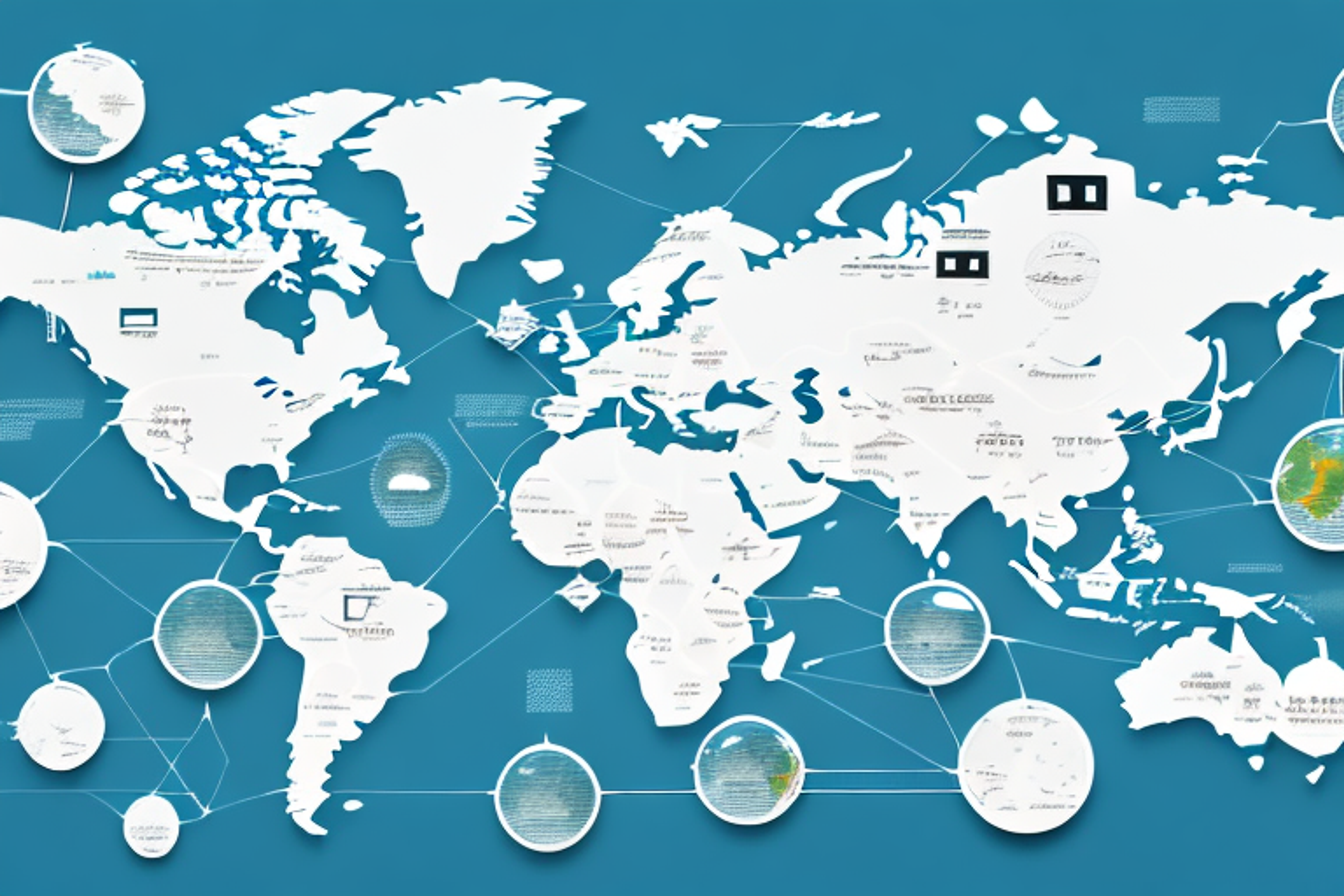How to Navigate the Gender Gap as a Woman in Software Engineering
If you're a woman in software engineering, navigating the gender gap can be challenging.
Posted June 13, 2025

Table of Contents
As a woman in software engineering, it can be challenging to navigate the gender gap that exists within the industry. Despite the advancements that have been made in recent years, women continue to experience inequality, bias, and discrimination in the workplace. If you're a woman in tech, you may be wondering how to overcome these obstacles and achieve success. In this article, we'll provide you with some strategies for navigating the gender gap and thriving in the software engineering industry.
Why the Gender Gap Exists in Software Engineering
The gender gap in software engineering primarily exists because of a lack of representation and cultural bias. Women are significantly underrepresented in tech, making up only 24% of the workforce. This lack of diversity can lead to a culture that is biased against women and perpetuates gender stereotypes. Gender bias can manifest in many ways, including unconscious bias during hiring, a lack of mentorship opportunities, and a lack of promotional opportunities.
Another factor that contributes to the gender gap in software engineering is the lack of female role models in the industry. When women don't see other women in leadership positions or successful in their careers, it can be discouraging and make them feel like they don't belong. Additionally, the lack of representation can lead to a lack of understanding of the unique challenges that women face in the industry, such as balancing work and family responsibilities. Addressing these issues and promoting diversity and inclusion in the tech industry is crucial to closing the gender gap in software engineering.
Overcoming Implicit Bias in the Workplace
One of the most significant hurdles that women face in tech is implicit bias. Unconscious biases can lead to women being overlooked for promotions, paid less than their male counterparts, and being excluded from critical projects. However, there are strategies you can use to help overcome implicit bias in the workplace. Look for opportunities to showcase your skills and ideas, seek feedback from colleagues and mentors, and advocate for yourself and your accomplishments.
Another effective strategy for overcoming implicit bias in the workplace is to educate yourself and others about the issue. Attend workshops or training sessions on diversity and inclusion, and encourage your colleagues and managers to do the same. By increasing awareness and understanding of implicit bias, you can help create a more inclusive and equitable workplace for everyone.
The Importance of Diversity and Inclusion in Tech
A key strategy for overcoming the gender gap in software engineering is to increase diversity and inclusion in the workplace. This means hiring more women and underrepresented minorities, creating a culture that values diversity, and providing support for women in tech. When companies embrace diversity and inclusion, they create a more welcoming and innovative environment where everyone can thrive.
Moreover, diversity and inclusion in tech can also lead to better business outcomes. Studies have shown that diverse teams are more creative and innovative, and can lead to better problem-solving and decision-making. This is because diverse teams bring a variety of perspectives and experiences to the table, which can lead to more well-rounded solutions.
However, achieving diversity and inclusion in tech is not always easy. It requires a commitment from leadership, as well as ongoing efforts to address unconscious bias and create a more inclusive culture. But the benefits are clear: not only does it help to address the gender gap in tech, but it can also lead to better business outcomes and a more innovative and welcoming workplace for all.
Strategies for Negotiating Salaries and Benefits
Another critical step in navigating the gender gap as a woman in software engineering is negotiating fair salaries and benefits. Women are often paid less than men for the same work, so it's crucial to advocate for yourself and your value. Research industry salaries, gather evidence of your accomplishments and use that information to negotiate your salary and benefits package. Additionally, look for companies that provide equal pay and benefits to all employees.
It's important to note that negotiating salaries and benefits is not just a one-time event. It's an ongoing process that should be revisited regularly. As you gain more experience and skills, your value to the company increases, and your compensation should reflect that. Don't be afraid to ask for raises or promotions when you feel you've earned them. Keep track of your accomplishments and contributions to the company, and use that information to make a strong case for yourself during negotiations.
Building a Support Network for Women in Tech
Another essential strategy for navigating the gender gap is to surround yourself with a supportive network. Women in tech face unique challenges, and having a community of like-minded individuals can be incredibly helpful. Join industry organizations for women, attend networking events and conferences, and seek out mentorship opportunities. Building a support network can help you navigate the challenges of the tech industry, overcome imposter syndrome, and find role models to emulate.
Additionally, building a support network can also provide opportunities for collaboration and professional growth. By connecting with other women in tech, you may discover new job opportunities, learn about emerging technologies, and gain valuable insights into industry trends. Collaborating with others can also help you develop new skills and expand your knowledge base, which can be beneficial for your career advancement. Therefore, building a support network is not only important for personal well-being but also for professional development.
Overcoming Imposter Syndrome as a Woman in Tech
Imposter syndrome is a common feeling among women in tech, and it can be challenging to overcome. This feeling of inadequacy and self-doubt can lead to women feeling like frauds in their roles. To combat imposter syndrome, focus on your successes and accomplishments, remind yourself of your value, and seek feedback and validation from trusted colleagues and friends.
It's important to recognize that imposter syndrome is not unique to women in tech, and many successful individuals experience it. However, it can be particularly prevalent in male-dominated industries like tech. One way to combat imposter syndrome is to connect with other women in tech and share experiences and strategies for overcoming it. Building a supportive network can help you feel less alone and more confident in your abilities.
Navigating Microaggressions and Discrimination in the Workplace
Unfortunately, women in tech still experience microaggressions and discrimination in the workplace. These can include comments about your appearance, being passed over for promotions, or being excluded from critical projects. It's essential to speak up against these behaviors and advocate for yourself. Seek out allies in the workplace, and report inappropriate behavior to HR leaders or upper management if necessary.
It's also important to educate yourself on the different types of microaggressions and discrimination that can occur in the workplace. This can help you recognize when it's happening and give you the language to address it. Additionally, consider joining or creating a support group for women in tech to share experiences and strategies for navigating these challenges.
Finally, it's crucial to hold companies and organizations accountable for creating inclusive and equitable workplaces. This can involve advocating for diversity and inclusion initiatives, pushing for transparent hiring and promotion processes, and supporting policies that promote work-life balance and equal pay. By working together, we can create a more just and equitable tech industry for all.
Balancing Work and Life as a Woman in Tech
Balancing work and personal life can be a challenge for anyone, but it can be especially challenging for women in tech. Long hours, tight deadlines, and high-pressure work environments can make it difficult to maintain work-life balance. To navigate this challenge, prioritize self-care, set boundaries, and communicate openly with your colleagues and managers. Seek out companies that value work-life balance, flexible work arrangements and ensure that you are taking care of yourself both on and off the job.
It is important to note that work-life balance is not just about time management, but also about mental and emotional well-being. Women in tech may face unique challenges such as gender bias, imposter syndrome, and lack of representation in leadership positions. It is crucial to address these issues and seek support from mentors, allies, and professional networks. Additionally, taking breaks, pursuing hobbies, and spending time with loved ones can help alleviate stress and improve overall quality of life.
The Future of Women in Software Engineering
The tech industry is continuing to evolve, and we're optimistic about the future of women in software engineering. As more women enter the industry, we can hope to see greater diversity, inclusivity, and support for women. By advocating for ourselves and one another, we can work towards a more equitable and diverse tech industry for all.
In conclusion, the gender gap in software engineering is a real and pressing issue for women in tech. But with the right strategies and support, it is possible to navigate this obstacle and thrive in your career. By advocating for yourself, building a supportive network, and embracing diversity and inclusion, you can help pave the way for a brighter future for women in tech.
It's important to note that the responsibility of creating a more inclusive and diverse tech industry does not solely fall on women. Men also play a crucial role in advocating for and supporting their female colleagues. By recognizing and addressing unconscious biases, promoting diversity in hiring and promotion processes, and actively listening to and amplifying the voices of women in tech, men can help create a more equitable and supportive industry for all.
Browse hundreds of expert coaches
Leland coaches have helped thousands of people achieve their goals. A dedicated mentor can make all the difference.











